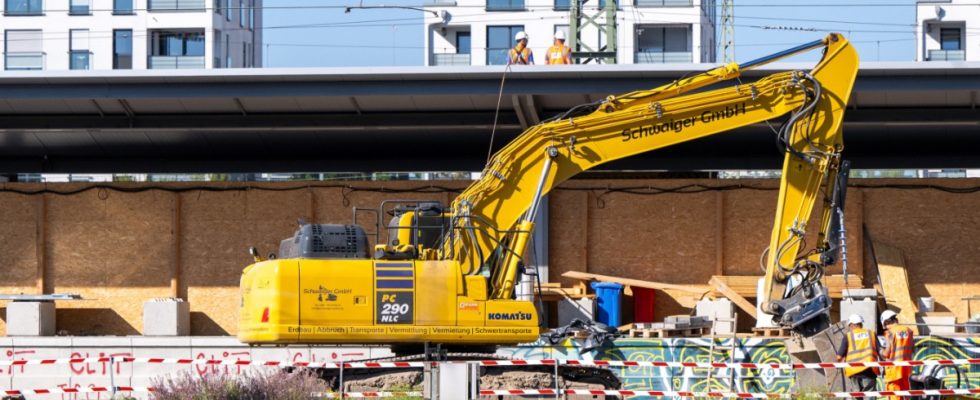It was one of the largest railway disruptions in recent memory. S-Bahn traffic on the main route was largely canceled for eleven hours on Thursday, and long-distance trains were unable to depart from or arrive at Munich Central Station for eight hours, with a few exceptions.
According to Deutsche Bahn (DB), hundreds of trains were affected, and passengers crowded together on the platforms. At first it was unclear to many people whether and when things would continue. Foreign Minister Annalena Baerbock, who was visiting the IAA, was also unable to take the train to Berlin as planned.
The cause of the disruption was apparently the error of an excavator driver who was working on the construction work on the second main line at Laimer train station. While excavating the gravel at the train station, the shovel came into contact with the overhead line at around 11:05 a.m. for reasons that are still unclear, damaging the transverse structure to which eleven overhead lines are attached on this section of the route. An overhead line tore off and fell onto an S2 that was on track 2 in the direction of Leuchtenbergring.
According to Stephan Schmidt, head of facility and maintenance management for the southern region at DB-Netz, such accidents rarely occur. After the damage report was received by the emergency control center, the so-called troubleshooting team, the federal police and rescue workers were alerted. The overhead lines were completely switched off, but around 90 minutes passed before the approximately 350 passengers of the S-Bahn, which was half on the platform, could get off.
In order to exclude the risk of electric shock – such an overhead line has a voltage of 15,000 volts – the affected overhead lines first had to be grounded. The DB specialists from the troubleshooting team do this with six meter long, so-called grounding rods. The train drivers are not allowed to open the doors beforehand. An emergency manager decides on the release.
According to Schmidt, by around 12:30 p.m. all affected trains had been cleared and had arrived at the platforms. After the S-Bahn was evacuated, it had to be towed by a diesel locomotive so that the DB people could begin their work.
Initially, the DB had feared that the work would last the whole Friday, but then it happened faster than expected, which, from the perspective of a railway spokeswoman, meant an “enormous effort”. The troubleshooting team had to tension a new line and reconnect all eleven overhead lines, track by track. Their function is then checked.
The work was finished around 10 p.m. And as always with major disruptions, the DB experienced long delays and failures. S-Bahn and regional transport were still affected on Friday morning.
How the accident could have happened has not yet been clarified. Excavators usually have a lifting limit so that they cannot cause damage to overhead lines. The federal police are investigating the 25-year-old excavator driver, who works for an external company, for dangerous interference with rail traffic.

